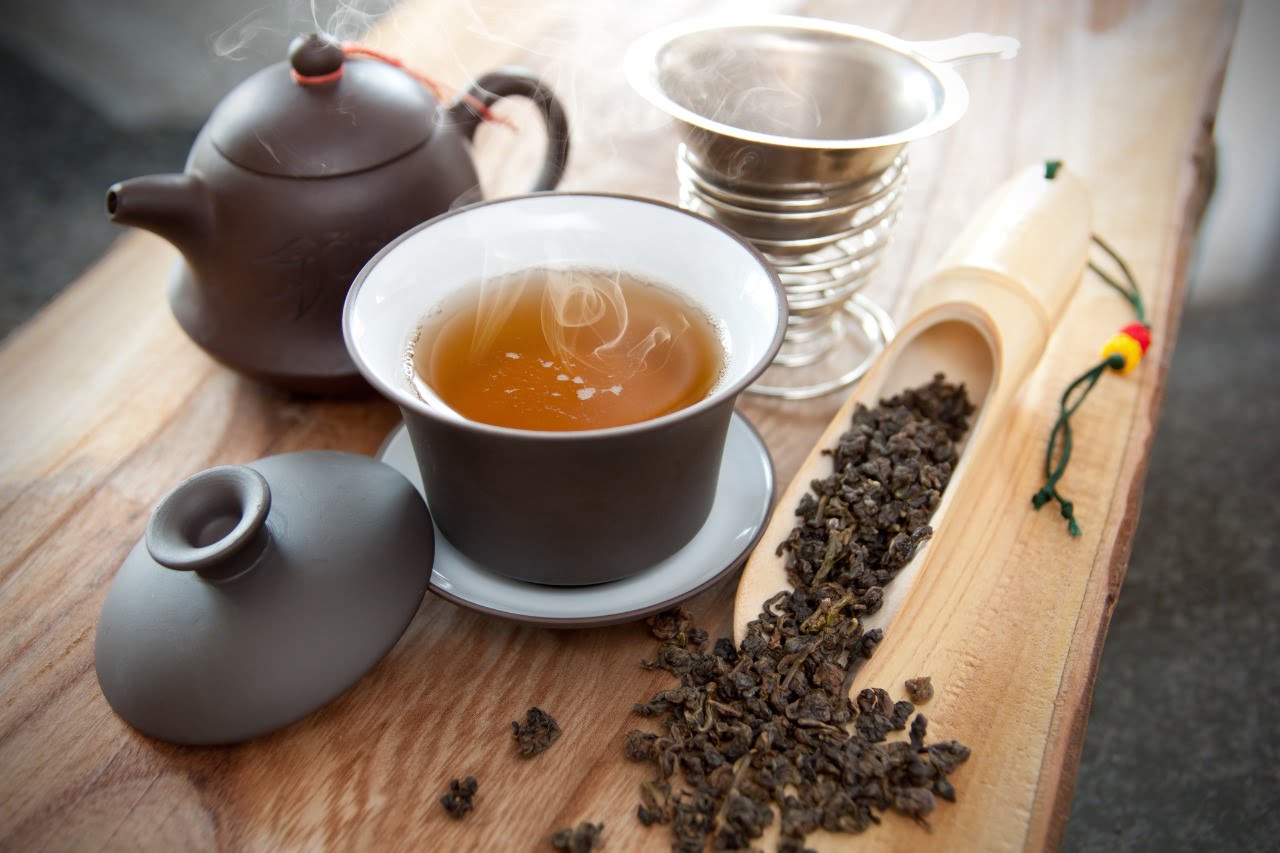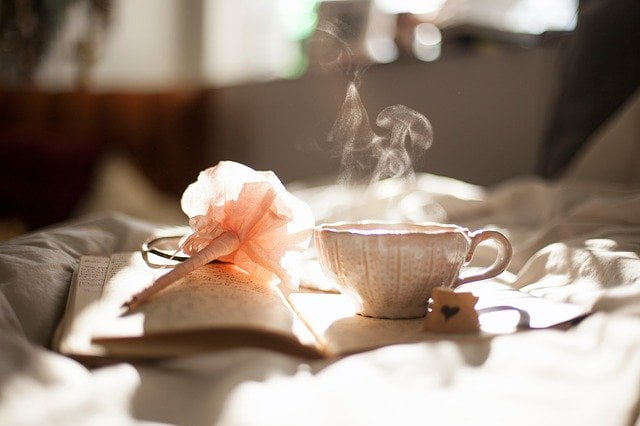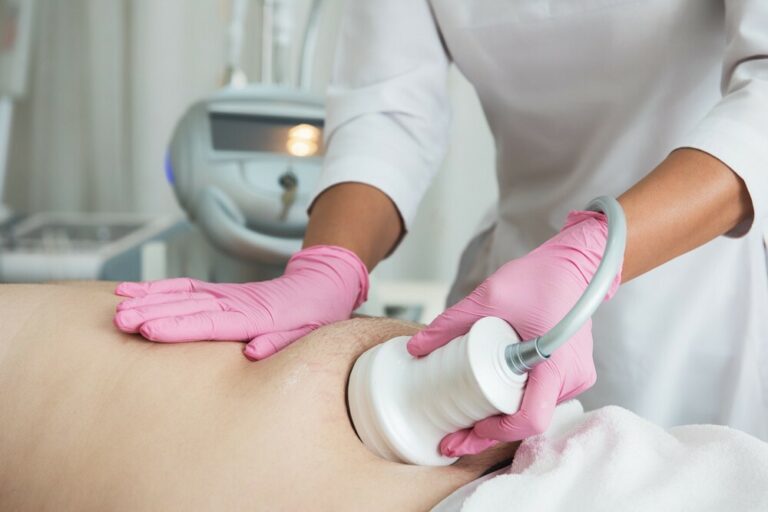Oolong Tea: A Complete Guide On Benefits, Varieties, Detox And Weight Loss
Oolong is a traditional semi-oxidized Chinese Tea that is made from the leaves of the Camellia sinensis plant. The same plants are used for the preparation of black and green teas and these are consumed commonly across the globe.
The variation and difference between these teas lies in their oxidation process. Oolong, unlike black and green tea, go through a semi-oxidized state of processing and represent only 2% of the world’s tea. The oolong tea thereby retains the natural essence of green tea and the toasted flavor of black tea.
Introduction
Detox beverages such as Oolong tea is known for its antioxidant properties that help in flushing out toxins from the body. As they release free radicals it is not an easy job to release them out of the body.
Oolong tea possesses several health benefits including boosting metabolism, reducing stress, and even preventing disease to an extent. With all these features, Oolong tea is considered to be rare, although expensive among the other tea varieties. But with a rich nutritional composition, its health benefits never seem to end.
Oolong Tea For Detox
Have you ever wondered what the best tea for detox is? Among the best detox teas, Oolong tea is the most common and popular. Oolong tea is the same family as that of black and green tea and they all originate from the same plant. However, oolong tea varies from the others in the way of processing. Heavily oxidized oolong tea is ideal to detox body fluids and offers other health benefits. Oolong tea contains detoxifying alkaloids such as folic acid, niacinamide, and other detoxifying alkaloids that help to detox the body fluids. Oolong tea also contains enzymes, polyphenolic compounds, and antioxidants that assist in the detoxification process of the body and fight against the development of tumors.
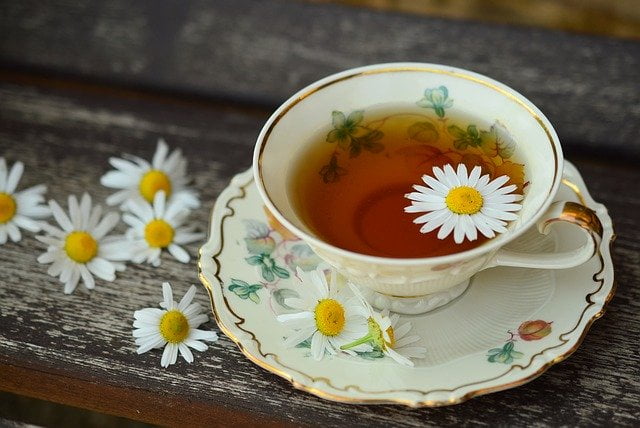
In this review, we discuss in detail the features, benefits, and types of Oolong tea.
Oolong Tea Uses
Oolong tea contains many compounds that are useful in weight loss and to detox the body fluids. Here are some of the uses of oolong tea:
- Polyphenols help to reduce weight loss and have anti-inflammatory effects
- It boosts metabolism by 10% and helps in burning fat
- The tea contains caffeine and EGCG – together accelerate fat oxidation
- Regulates blood sugar levels, blocks absorption of carbohydrates and fats
- Helps to lower bad cholesterol
- Regular consumption prevents diabetes by inhibiting alpha-glucosidase
- Oolong tea helps to increase pH levels of the digestive tract and promotes better digestion
- Prevents stomach ulcers, bacterial infection and acid reflux in the body
Weight Loss And Burns Fat
Oolong tea helps in weight loss in many ways:
Detoxes body fluids
The compounds present in the Oolong tea help prevent lipogenesis i.e. metabolic formation of fats. The tea is known to activate enzymes that are responsible for fat metabolism as it is a calorie-free available in different variants.
Curbs the appetite
Oolong tea can effectively reduce hunger pangs and suppresses your appetite. The main reason for that is the effect of oolong tea on the catecholamines which helps to elevate the craving for food. The antioxidants present in the tea inhibit the production of enzymes that are responsible for the weight gain.
The polyphenolic compounds that are present in the oolong tea are known to control the rate of fat metabolism in the body. Daily consumption of the tea is linked to obesity control and thereby weight loss. Regular drinking of oolong tea known to boost mental and physical energy helps to burn calories, increases serotonin production, and counter free radicals.

Oolong Tea Relieves Eczema
Eczema or atopic dermatitis, is the skin condition that causes itchy, scaly skin on the insides of the elbows, back of the knees, and on the face. This condition is pretty dangerous as it affects more than 15% of infants and 3% of adults.
Consuming two cups of oolong tea daily helps decrease the inflammation and itching caused by Eczema. As oolong tea is semi-fermented, the polyphenols and antioxidants that are activated in the tea help to relieve the skin condition to an extent.
Oolong Tea Health Benefits
Oolong tea’s claim to fame is that it has zero calories, and provides numerous health benefits. Oolong tea contains polyphenols which are known to be effective in regulating the metabolic rate in the body. It works by activating the enzymes responsible for metabolizing fat cells, so daily consumption of the tea is linked to obesity control.
Here Are The Different Health Benefits Of Consuming Oolong Tea
1. Reduces Risk Of Cardiac Diseases
Research reveals that there is a proportionate link between regular Oolong tea consumption and reduced levels of cholesterol. According to the study, people who drank at least 10 ounces of tea a week showed a lower risk of having overall cholesterol, triglycerides, and LDL cholesterol levels.
Consuming oolong tea increases the adiponectin levels in the body. Adiponectin is a hormonal protein that assists in maintaining and regulating the blood sugar levels and breakdown of fatty acids. Elevated levels of adiponectin increase the risk of developing coronary artery disease and reports show that oolong tea can reduce the progression of atherosclerosis in people suffering from cardiac diseases.
The regular intake of oolong tea is linked with the reduced risk of death by cardiovascular disease and other heart risks.
2. Promotes Weight Loss And Fights Against Obesity
Studies show that people who drank Oolong tea for around six weeks were able to reduce weight and body fat as well. The polyphenols that are present in the tea assist in maintaining your metabolism from slowing down simultaneously as you lose weight thereby aiding the weight loss process. The phenolic compounds help in reducing visceral fat and promoting weight loss and fighting against obesity.
Besides, the catechins and caffeine that is present in the tea works in combination with weight loss and maintains lean body mass.
3. Reduces The Risk Of Cancer
The antioxidants present in oolong tea have been known to fight against certain forms of cancer like oral, lung, skin, and pancreatic cancer. Consuming Oolong tea regularly has shown to reduce the risk of cancer by 4%. The antioxidant – EGCG that is present in the tea has the properties of scavenging free radicals and helps in protecting the cells from DNA damage.
The polyphenols in the tea stop the multiplication tumor cells and promote cell death in those where they may become malignant. The other component – catechins can inhibit the invasiveness of tumor cells and the tea assists to detox the body with the enzymes which can help in fighting against the development of tumors.
4. Helps In Preventing Diabetes
The antioxidants in the tea help in reducing the blood sugar and insulin levels and helps to minimize the risk of developing type 2 diabetes. Studies show that consuming 24 ounces of tea per day has a 16% reduced risk of developing diabetes. Drinking oolong tea reduced blood sugar levels by up to 30% in diabetic patients.
5. Helps In Fighting Against Inflammation
The plant-derived compounds that are present in Oolong tea help in protecting against inflammation and inflammatory conditions such as arthritis. The most potent flavonoid compound – EGCG fights the free radical that is responsible for the cause of inflammation and assists in preventing diseases like clogged arthritis.
The antioxidants that are present in Oolong tea target specific genes and signal them to reduce inflammation. Rather than depending on supplements to reduce inflammation, it is advisable to start consuming the oolong tea as it provides equally effective results.
6. Improves Brain Health
Consuming Oolong tea has proven to improve the functional aspects of the brain and even prevent Alzheimer’s. The caffeine present in the tea triggers the norepinephrine and dopamine release – which are the two chemicals that are associated with the mood and beat stress.
Another component – theanine present in the tea assists in relieving anxiety and boosts attention. The polyphenols in the tea have a calming effect on the mind and reduce the risk of cognitive disorders.
7. Improves The Functions Of Teeth And Bones
The tea is effective for women who are going through menopause and experience weakening of bones leading to osteoporosis and arthritis. Drinking oolong tea can prevent conditions by maintaining high bone density. Fluoride that is naturally present in the tea helps to prevent enamel loss and tooth decay by replacing calcium and phosphorus.
It helps to maintain teeth and keep bones rigid without getting damaged by food or by everyday wear and tear. The tea also helps to remineralize bones and maintain strength. Regular consumption of oolong tea reduces dental plaque and prevents bone disorders.
8. Aids Indigestion
Oolong tea helps in aiding digestion for people who are not sensitive to caffeine. The tea functions by alkalizing the digestive tract, and treats acid reflux and ulcer problems. As it contains antioxidants and antiseptic in function, oolong tea helps in clearing bacteria.
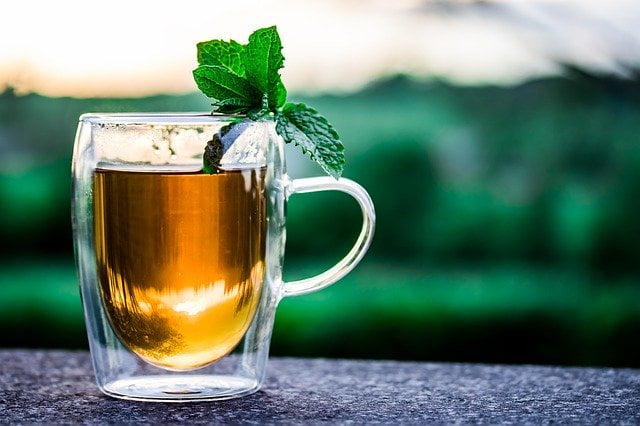
Benefits
There are other oolong tea benefits including:
- Relieves stress
- Boosts Immune system
- Protects teeth
- Boosts metabolic rate
- Lowers cholesterol
- Increases mental alertness
- Aids digestion
- Stabilizes blood sugar levels
Oolong Tea Skin Benefits
Drinking Oolong tea helps rejuvenate your body and skin. The oolong tea not only has health benefits, better taste but also has several benefits on the skin.
In general, cellular DNA damage occurs due to oxidative stress and eventually speeds up the aging process among individuals. On the skin, the process of DNA damage not only appears as dark spots particularly in older people but also results in wrinkles that are caused due to the breakdown of skin cells. As the age, skin loses the ability to knit itself back to its normal state and thereby results in wrinkles. According to the research, just consuming oolong tea for just 15 days, resulting in a 50% reduction of free radicals.
Many patients are seen with some of the chronic skin diseases including Eczema while other people are interested in regaining their healthy skin. This can be achieved by drinking a few cups of this special tea a few times a day shows amazing benefits such as:
- Improves color and brightness of skin
- Diminishes wrinkles of the skin
- Works as effective against the sun and best sunscreen
- Improves resiliency and tone of the skin
- Decreases and clear dark aging spots on the skin
The other skin benefits of oolong tea are:
Prevents Skin Aging
No doubt we all love to look younger with fresh skin tone and this can be achieved by consuming the special tea – Oolong tea for around 3 weeks to see the difference in the skin tone. The tea significantly helps to achieve the skin tone that is impervious to aging. It prevents to a large extent of quick aging with its remarkable benefits on the skin. The antioxidants are triggered when the tea is oxidized to an extent and they help in maintaining the skin tone and prevent aging.
Helps To Keep Your Skin Fresh
The tea helps to maintain the skin due to its voluminous composition of antioxidants. These antioxidants that are present vigorously help in maintaining the freshness of the skin by fighting against free radical formations. This further goes a very long way in reducing oxidative stress which is the main reason for the cellular DNA damage.
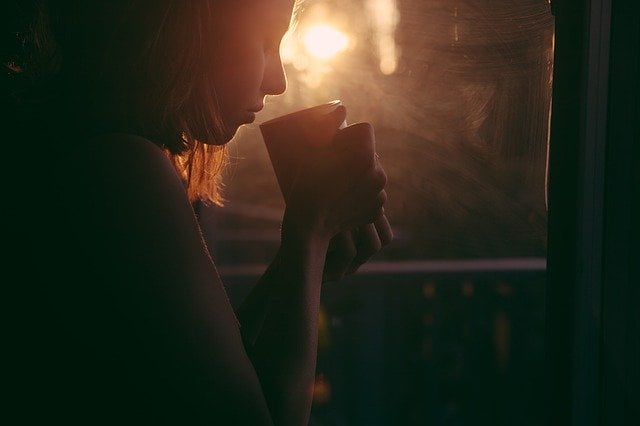
Is Oolong Tea Good For You?
Oolong tea combines the goodness of several dark and green teas. But strangely, this tea accounts for only 2% of the world’s tea consumption. It contains properties that help you to lower your lipid content and fight obesity. Though it corresponds to less consumption rate, it has wonderful health benefits and we bet it is good for you. The tea contains ingredients such as flavonoids, caffeine, fluoride, and theanine.
As most of the oolong tea benefits are attributed to the catechins that are present, they provide effective health benefits and prevent conditions such as heart disease, cancer, obesity, diabetes, oxidative stress, and other cognitive diseases that are prevalent these days. With these above features and health benefits, Oolong tea is a good beverage to have.
Does Oolong Tea Burn Fat
The unique feature of the Oolong tea is that it helps for weight management. There are two main ways to reduce the food-related bodyweight namely: increase energy expenditure (EE) and the other one by inhibiting nutrient absorption that includes fat and carbohydrates. Oolong tea has a significant feature of reducing body weight working in both the above ways.
The antioxidants that are present in the tea helps in boosting the metabolic rate by around 10% which leads to the burning of more calories.
The significant amount of caffeine that is present in the tea works effectively with the EGCGs to help in the burning of overall body fat. The tea helps in reducing the overall cravings by regulating the blood sugar levels. The polymerized polyphenolic compounds present in the tea greatly enhance the overall metabolic rate and assist in weight loss programs. Polyphenols also help in reducing the overall absorption of fat in the body and assists in lowering cholesterol levels.
How Much Oolong Tea To Drink For Weight Loss?
Oolong tea can be taken twice a day to observe effective improvements in the overall body weight and to promote weight loss. But it is necessary to ensure that the consumption isn’t too much as an excess of which leads to adverse effects on the body.
Start your morning by consuming a cup of this unique beverage that can help you to shed pounds and blast belly bloat. But this cannot be achieved by the tea at a faster rate i.e. it doesn’t melt fat fasters; it has to be consumed in decent quantity regularly.
Sipping two to three cups a day of this Oolong tea helps in delivering the potent dose of slimming polyphenols into the hot water steeped with the oolong leaves. The tea

Oolong Tea Side Effects
Drinking tea regularly in minimum quantity is likely to cause no side effects. However, consumption in the long term might cause side effects. The major risks of oolong tea are the risks that are associated with drinking Caffeine chronically.
The side effects of this caffeine consumption include:
- Palpitation
- Rapid heartbeat
- Insomnia
- Nervousness
- Tremors
- Headaches
- Abdominal pain
- Nausea, vomiting, and diarrhea
- Increased urine flow
Other than these the consuming Oolong tea has certain side effects including:
- Anxiety disorders – the caffeine present in the tea triggers the anxiety disorders in people and there are chances that they might turn worse.
- Bleeding disorder – the caffeine slows the blood clotting property in the body and might turn into bleeding disorders.
- Heart issues – consumption of tea causes irregular heartbeat. It is advisable not to have tea with other stimulants such as amphetamines or ephedrine – as they cause serious heart problems
- Issues associated with diabetes – as the oolong tea contains several secondary compounds, they might interfere with the function of how the blood sugar controlling the diabetics. For people with diabetes, it is advisable to consult the doctor before consuming oolong tea.
- Diarrhea – excessive intake of oolong tea leads to diarrhea or sometimes might worsen the condition.
- Glaucoma – the compounds in the tea such as caffeine, flavonoids, increases the pressure in the eyes and hence people with eye conditions are advised to consult the doctor before consuming the tea.
- High blood pressure – changes of increase in the blood pressure level due to the high levels of tea consumption and so people with blood pressure conditions are suggested to talk with the doctor before taking oolong tea.
- Weak bones – Due to the frequent urination after consumption of tea, there are chances that the tea might flush the calcium out along with the urine and so if you are concerned to improve your bone health, then have a word with your doctor before consuming.
- Issues caused during Pregnancy and breastfeeding– Pregnancy and breastfeeding women are advised to restrict the consumption of tea only two times a day. Excessive caffeine might affect the health of the baby and there are chances that it causes irritability while breastfeeding.
- Consuming more than three cups a day might result in premature birth and low birth weight in newborns.
- Anemia – Drinking oolong tea interferes with the iron absorption leading to iron deficiency.
- Avoid consuming oolong tea when you are on the blood-thinning medications that include heparin or warfarin.
- If you are using herbs or supplements for slowing your blood clotting levels such as Clove, Garlic, Ginkgo biloba, Ginger, etc.
- Patients with health conditions such as kidney disease, anxiety, stomach ulcers are advised not to drink oolong tea as it contains the diuretic compound – caffeine that causes adverse side effects.
Oolong Tea Flavor
Oolong tea also termed as black dragon tea is a mildly oxidized tea and is considered to be in the middle ground between green and black tea flavor. The tea often has the flavor and aroma similar to that of Pu-erh teas. As Oolong tea is made out of leaves of the Camellia sinensis plant, the flavor and aroma of the tea vary based on the production process.
To our knowledge, green and white teas are not oxidized during the process while Oolong and black tea leaves are oxidized. While the black tea is completely left to the oxidation, oolong tea is stopped before the completion of the process, and this results in the semi oxidation of tea that has all the aspects of both oxidized and unoxidized teas.
When talking in-depth about the flavor of the tea, it varies drastically depending on the duration of the oxidation. In general, the flavor of the oolong tea lies in the accurate process of oxidation where it undergoes from 8 to 80 percent of the oxidation state. And each master uniquely tailors the process of oolong tea oxidation, resulting in the world of flavor that ultimately leaves the oolong tea an extremely versatile tea.
Thanks to the wide range of oxidation levels that make the oolong tea vary widely in terms of flavor. The tea can be sweet and fruity or sometimes woodsy and rich. While the aroma of the tea contains the blend of honey hints while other aromas of the tea come through roasting and are complex.
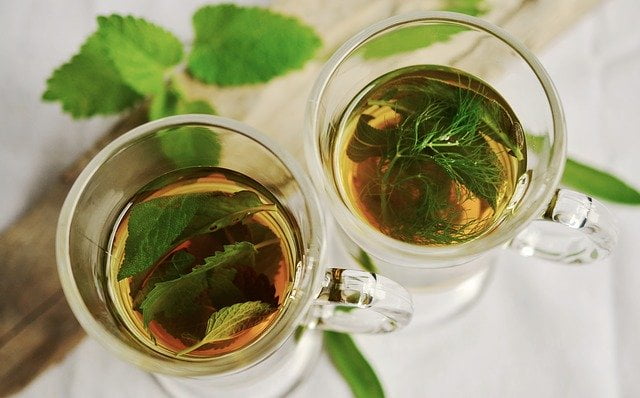
Chinese Oolong Tea Flavors
Phoenix Tea
the tea is produced from the single bush and leaves of each bush have a different flavor which means the tea tastes different from every batch harvested. The Phoenix teas are well noted for their natural flavors and aromas of fruits and flowers.
The tea has a full-bodied rich feel and some offer a floral flavor similar to that of orange blossoms or orchids. Other teams in this group are fruity or spicy with flavors similar to ginger and grapefruit.
Iron Goddess of Mercy
the tea also termed as Ti Kuan Yin is the most famous tea grown in the high mountain region. The tea leaves are usually plucked by the trained monkeys and are the highest quality among other teas. The tea is usually light and airy and possesses the flavor of flowers and honey. The aroma of the tea often smells like orchids and gives a refreshing finish.
Wuyi Oolong Tea
the tea also termed as Da Hong Po that is heavily oxidized. The tea has a sharp smoky flavor that is unique. It also has a hint of caramel, butter, and toast.
High Mountain Tea
the tea popularly known as Gaoshan and the dry leaves develops aromas of rose, jasmine, and geranium. The oxidized leaves are generally crisp and sweet with notes of flowers or pine. The tea features the tastes of buttery that is smooth and creamy.
Milk Oolong Tea
commonly known as Golden Daylily tea and is named due to the creamy flavor that is light and flowery. The tea has a buttery, creamy flavor with a smooth finish. The milky flavor of the tea does not produce due to the infusion of milk, instead, the leaves tend to naturally produce a milk-like flavor and aroma when oxidized for a certain period.
Oolong Tea How To Make/Oolong Tea Preparation
When brewing Oolong tea, the best way is to use loose leaves rather than going for the tea bags. The tea leaves, on the whole, contain the entire leaf and release more flavor efficiently when steeped.
It is simple to prepare oolong tea and all you need is to get good quality oolong tea. Here are some of the methods to prepare tea for weight loss.
1. Preparation Of Tea With Teabags
Boil a cup of water and pour it in a small cup. Dip the oolong tea bag and allow it to steep for around 5-7 minutes. Discard the tea bag and enjoy the tea.
2. Preparation Using Tea Leaves
Boil a cup of water and pour it in the cup. Add oolong tea leaves in the water and close it with the lip. Allow it to steep for around 5 minutes, strain the tea into another cup, and enjoy drinking.
3. Preparation With Oolong Tea Powder
Take a cup of boiled water and add the Oolong tea powder into it. Allow it to steep for just 2-3 minutes, strain the tea and it is ready to drink.
Oolong Tea With Honey
Oolong tea tastes great when you consume it with honey. The preparation involves pouring the hot water in a cup over the tea leaves and allowing it to steep for over 4-6 minutes. Strain the tea leaves and add the honey and stir. Add a few ice cubes to it before you consume it if you like it chilled.
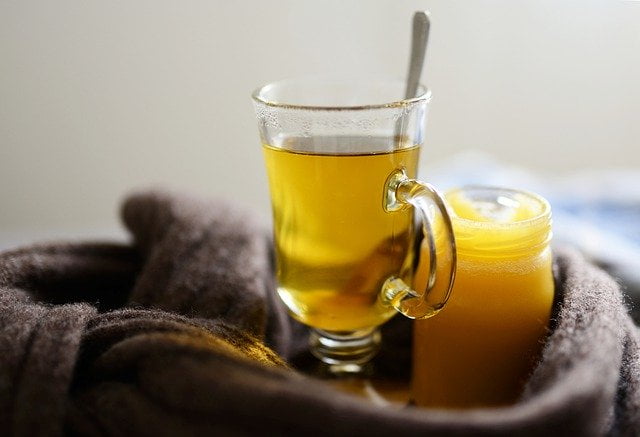
Oolong Tea Decaf
In general, the original tea leaves contain caffeine that enhances the flavor and helps to refresh your mind and body. But consuming excessive caffeine has its health risks and if you are restrained to consume caffeinated drinks, then decaffeinated Oolong tea is the best option.
There are decaf oolong signature tea bags that are available in the market for around $6 for the size of 25 bags. The tea is decaffeinated by exposing moistened tea leaves to pressurized carbon dioxide that acts as a solvent to remove caffeine. As there are no other chemicals that are affected during the process, the tea retains its flavor and other antioxidants benefits in it.
When To Drink Oolong Tea?
Of course, oolong tea is a special beverage that can be enjoyed all day, but when consumed at a certain time of the day would have its utmost benefits. Although cannot give a solid recommendation as to what time it can be consumed, there are certain options to follow to experience the best of its benefits. Here are possible times to drink the tea:
- Oolong tea is an excellent choice to drink it early in the morning along with the breakfast
- It can also be consumed as a replacement for black tea during the afternoon meal
- Drinking oolong tea 20-30 min before exercise can also add more benefits
- You can also consume it with your evening snack
Times of the day not to drink oolong tea – (Oolong tea is not advisable to have during:)
- Right before you go to sleep
- Immediately during, before or after eating – you should have 30 minutes before
- Not suggested having on your empty stomach
Oolong Tea Pregnancy
In general, it is ideal to consume tea rather than coffee during pregnancy. While you cannot give up the caffeine totally during pregnancy, you still can have a beverage that has less caffeine content in it. The good news is that oolong tea is the best and safe to have during pregnancy.
Pregnant women should stay away from caffeine and should consume no more than 200mg of caffeine per day. As one small cup of oolong tea contains approximately 60-70 mg of caffeine, it is advisable and allowed to have only two cups of tea per day. As too much caffeine might cause premature delivery, low birth weight, and harm to the baby.
Benefits Of Oolong During Pregnancy
- Antioxidant eliminates free radicals
- Prevent heart disease, cancer, etc.
- Relieves stress levels
- Polyphenols help in maintaining weight
- Enhances pregnancy glow
- Anti-allergic compounds deal with skin problems and irritation
Oolong Tea While Breastfeeding
If you are breastfeeding, oolong tea is safe as it contains less amount of caffeine. However, you are restricted to have only two cups of tea per day as too much caffeine might cause irritability and increase bowel movements in nursing infants.
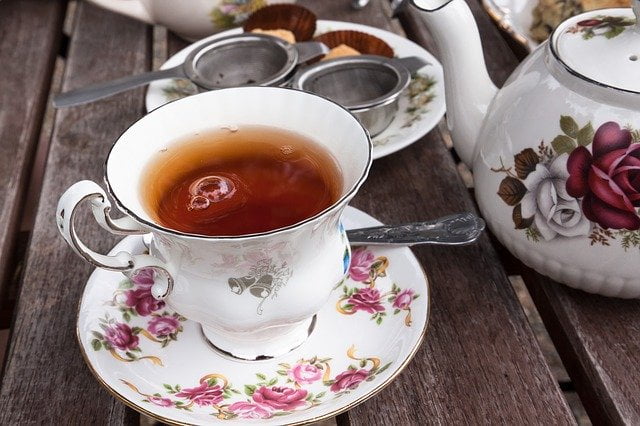
Oolong Tea Caffeine Content
Oolong tea caffeine occupies the pot between green and black tea. The fermentation of the tea reduces the caffeine content and as the oolong tea is semi-fermented it has less content when compared to those of other teas.
Oolong tea contains approximately 10-70 mg per 8-ounce cup and the caffeine content varies according to the types of oolong tea namely:
- Pouchong tea – 12 mg/100ml
- High mountain tea – 13mg/100ml
- Dong Ding oolong – 15 mg/100ml
- Jinxuan – 13 mg/100ml
- Oriental beauty tea – 18 mg /100ml
- LiShan – 13 mg/100ml
- Dayuling – 12 mg /100ml
- Tieguanyin – 15 mg/100ml
Oolong Detox Tea Brands
There are nearly 17 best brands of oolong tea that provide health benefits to the consumers.
Here are some of the best brands of oolong tea namely:
- Prince of Peace Organic Oolong tea – 100 tea bags
- Cha4TEA 36 oolong Tea K Cups for Keurig K – cup
- High mountain oolong tea leaves
- Full-flavored oolong tea bags
- Metabolism tea – super organic tea pods with superfoods
- TEamonk Darjeeling tea
- Positively Tea company organic hibiscus Tisane
- Republic of Tea peach blossom oolong
- Pure oolong loose leaf tea
- Organic GABA oolong loose leaf tea
- Bigelow oolong tea
- Coffee bean direct seachung oolong tea
- China Fujian
- Foojoy Wuyi oolong tea
- Stash oolong tea
Detox Tea Products Containing Oolong
Numerous oolong tea brands are available in the market such as:
- Teamonk Darjeeling oolong tea
- Pride of India Organic Digestive oolong tea
- TeaTreasure Oolong Darjeeling tea
- Goodwyn Oolong Rose tea
- True elements oolong tea
- Damo oolong tea
- The Indian chai-Chinese Ginseng oolong tea
- VAHDAM – high mountain oolong tea
Oolong Tea Before Bed?
It is not recommended to have oolong tea right before going to bed. As the tea contains caffeine which may disrupt your sleep cycle. The amount of calming L-Theanine in oolong tea will help offset the caffeine and hamper your sleep.
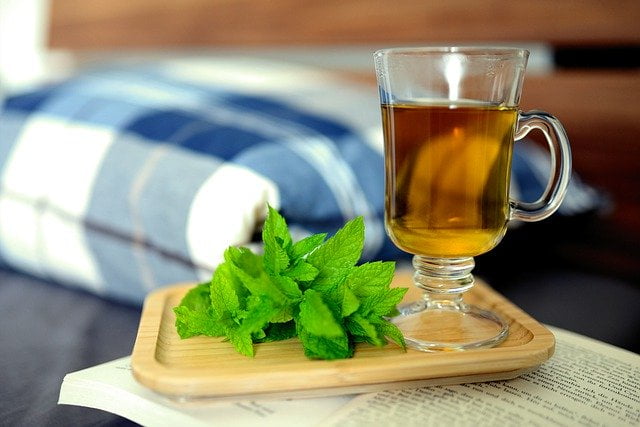
Black And Green Oolong Tea
Oolong tea originates from the camellia Sinensis plant and the difference of taste and flavors lies based on its oxidation process. Oolong tea is partially oxidized while black and green are fully oxidized. So, the tea leaves range in color from dark green to black. The semi-oxidized state of the tea gives distinct flowery and earthy flavors.
Oolong tea is neither a black tea nor a green tea, it falls into the separate category of tea. Yet the tea leaves end up more like black tea as it shares most of the characteristics similar to it. But based on the process of the tea leaves, oolong tea often falls in between the two.
The oxidation levels of the tea vary based on the processing of the tea by a tea master. The levels range between 8 – 80% production styles depending on the master. Due to the process, the oolong tea falls sometimes towards the malty black tea which is more oxidized.
Is Oolong Tea Green Tea?
While green is barely oxidized tea, oolong tea is partially oxidized and falls in between the green and black tea. And due to this oolong tea retains some of the original green leaf colors that are plucked fresh. Depending on the production style of the tea master, the oxidation level varies from one to another. This is the reason why the flavor profile of the oolong tea leans more towards the fresh green tea which is less oxidized.
Oolong Tea Vs Black Tea
Many people believe that oolong is a type of black tea which isn’t true. Oolong tea is collected from the Camellia sinensis plant and each batch varies based on the bush. And each tea is processed differently.
In black tea, the process methods involve full oxidation of leaves, oolong tea on the other hand is partially or semi-oxidized. It has a dark color like black tea and is called black oolong teas.
The oolong teas have oxidative levels that are close to the black tea although they belong to the oolong category.
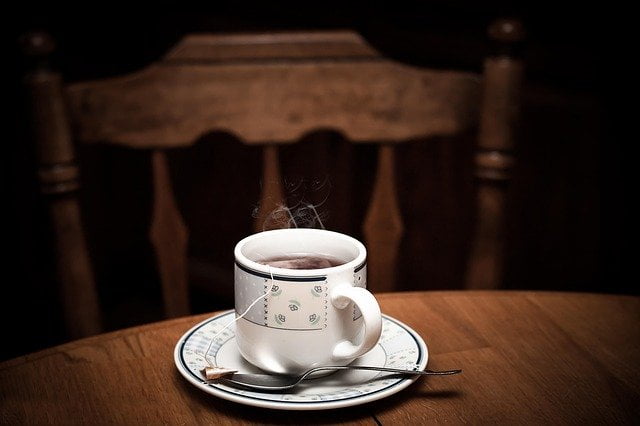
Oolong Tea Vs Green Tea
Both oolong and green tea are less oxidized when compared to that of black tea. Though they possess many similarities, they still have differences between them.
Oolong tea leaves are allowed to wither and oxidize under strong sunlight. Further, the degree of oxidation ranges from 8-85% after which the tea leaves are twisted into long, curly leaves or sometimes turned into small beads with a tail.
Green Tea
Green tea is made by pan-frying or steaming its leaves. This is done to quicken the processing and then drying it. Doing this prevents leaves from too much oxidation and thereby retains the freshness and flavor of the tea over a long time.
Green Tea
In the case of oolong green tea, twisting and rolling of the leaves are not for aesthetic purposes, but can be changed by the brewer to bring in a particular style and flavor. The final taste lies in the method of opening the leaves during the brewing process to release their flavors.
In terms of flavors, Oolong has flavors ranging from sweet and floral to rich, smoky with the combination of the base of honey and wood. The tea lacks the astringency that is present in the green tea and is more sublime and intense.
While green tea has a vegetal and grassy flavor with astringent and bitter taste undertone. Again the taste and flavor of green tea depend on the processing, packaging, and brewing, this oolong is better in this aspect.
Oolong tea has lower levels of polyphenols and catechins when compared to that of green tea. The caffeine content in the oolong tea is around 37 mg, while in the green tea it has 25 mg per cup.
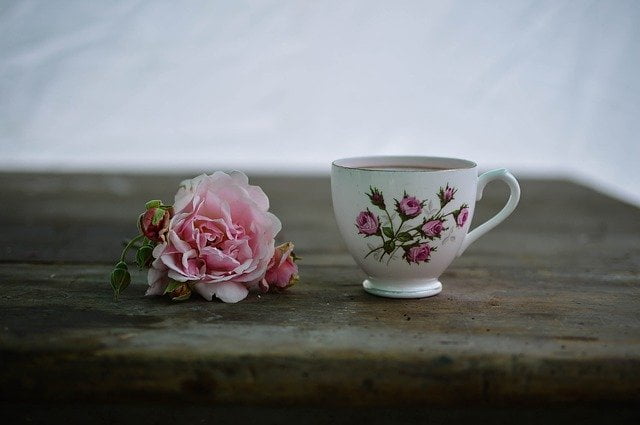
Oolong Tea Monkey Picked
Oolong tea monkey-picked is primarily grown high in the mountains of China where the monks train monkeys to climb up the hill and pluck the youngest leaves as it is hard for people to reach the branches of Cliffside plants. The places are not reachable by humans and so monkeys are well trained to do so.
The youngest leaves from the wild trees that are steep on the mountains are monkey picked oolong tea and they are of the most superior quality. The hand-plucked leaves are eventually fixed that create orchid aroma and is the topmost grade of oolong. The flavor is like rich honey that assists in boosting the immune system, helps in metabolism rate causing weight loss, lowers cholesterol, increases mental alertness, digestion, and gives better skin conditions.
With all the above features, the tea has a clean and refreshing taste and aroma and as it is a high-quality brew, it has a mild astringency and is a mellow drink. As it is of high quality, the variety is more expensive.
So as you can see, Oolong tea is naturally rich in minerals and antioxidants and has a host of benefits for people consuming it. Check out a pack of it today and return it easily if you’re still not convinced after that.
